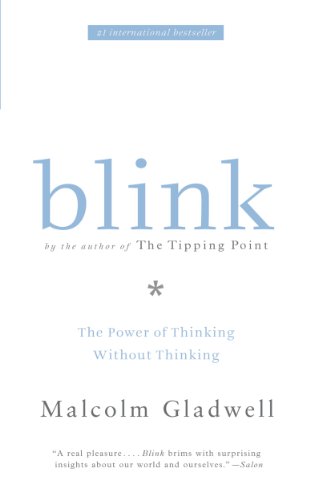

This article is an excerpt from the Shortform summary of "Blink" by Malcolm Gladwell. Shortform has the world's best summaries of books you should be reading.
Like this article? Sign up for a free trial here .
Why is irrationality so uncomfortable? Can knowledge that is not backed by a rational explanation ever be true? Why do we feel such a strong urge to rationalize our decisions and behaviors?
Knowledge without a rational explanation is a double-edged sword. This type of knowledge can be the truest, deepest kind, but it can also harbor biases. Because most of us don’t feel comfortable if we don’t know exactly what made us arrive at a particular judgment or decision, we tend to rationalize. But instead of helping us to uncover the truth, rationalizing often takes us further away from it.
Learn about the psychology of rationalization, why we do it, and why it’s problematic.
What Is Rationalizing?
In psychology, rationalization is inventing inaccurate explanations for our actions or thoughts. By doing this, we try to make our decisions seem more rational, both to others and to ourselves.
We tend to feel that there’s a rational reason for everything we do. When we don’t know why we’ve made a certain decision, we make something up. We don’t lie on purpose. We actually believe the lies that our conscious minds construct to explain the decisions of the unconscious mind.
| Rationalizations and the Left Hemisphere Rationalizations could be a way for us to “cover up” faulty communication between brain hemispheres. Research with split-brain patients may offer some clues about how it works. Split-brain patients are people who have had their corpus callosum—the tract of nerve fibers that connects the left and right hemispheres—severed to treat severe epilepsy. In someone with an intact corpus callosum, the right and left hemispheres can communicate directly. This means that the left hemisphere is aware of the perceptions and actions of the right hemisphere (such as moving the left side of the body and seeing things in the left visual field) and vice versa. But in a split-brain patient the two hemispheres are cut off from one another. Michael Gazzaniga and colleagues investigated what happens when there’s different input to the two hemispheres of split-brain patients. In most people, language is a left-hemisphere function. The team found that when they presented stimuli to the left hemisphere (for example flashing an image in the right visual field), the patient could easily name and describe the image. If a picture of an object was presented to the right hemisphere, patients verbally denied seeing anything, but could select that picture from an array of different pictures using their left hand. When different images were flashed simultaneously to the two hemispheres, split-brain patients could only report verbally on the right-hand one. For example, one patient’s right hemisphere was shown a picture of a chicken’s foot and his left hemisphere a picture of a snowy landscape. Afterward, he pointed immediately to a picture of a whole chicken and a picture of the shovel. When asked why he’d chosen the shovel (information that the verbal left hemisphere had no access to), he said easily, “You need the shovel to clean out the chicken shed.” Snap decisions require us to assimilate a large quantity of information that’s presented very fast. This makes them a more natural fit in the parallel-processing right hemisphere than in the left. Our own rationalizations may just be a version of the “chicken coop” story. |
There are two problems with rationalizing our snap judgments:
- Rationalizing leads to inaccurate explanations of our decisions.
- Rationalizing leads to bad decision-making and decreased performance.
Problem 1: Rationalizing Our Snap Judgments Leads to Inaccurate Explanations
Gladwell gives the following example to demonstrate how far our rational explanations can veer from the truth.
The Problem of the 2 Ropes
In a 1931 study, psychologist Norman Maier hung two ropes from the ceiling, far enough apart that if you held one rope in your hand, you couldn’t reach the other. There were various tools and pieces of furniture in the room as well. He asked volunteers to come up with as many ways to tie the two ropes together as they could.
There were four ways to tie the ropes. Most people discovered the first three pretty easily.
- Stretch one rope as close to the other as possible, then anchor it with a chair. Go get the other rope and tie the ends together.
- Tie an extension cord to one rope. This makes it long enough for you to hold while grabbing the other rope. Tie the two ropes together.
- Take one rope, then use a pole to pull the other rope toward you. Tie the ends together.
Most people struggled to find the fourth solution: Swing one rope like a pendulum, then grab the other rope. Catch the swinging rope and then tie the ends together.
If a volunteer was having trouble producing this fourth solution, the psychologist gave their unconscious minds a suggestion. He walked across the room and casually bumped into one of the ropes, causing it to swing. The move was so subtle that volunteers’ unconscious minds picked up on the suggestion while their conscious minds didn’t. After that, most people came up with the fourth solution.
Rationalizing Unconscious Decisions
- When asked to explain how they came up with the fourth solution, volunteers said, for example, that the solution came to them when they thought of monkeys swinging in trees, they recalled something from a physics lesson, or the idea just popped into their head.
These people weren’t lying. They were just automatically producing explanations that their conscious brains found most plausible. They had no idea the psychologist had given them the answer when he bumped the rope.
Problem 2: Rationalizing Our Snap Judgments Leads to Bad Decision-Making
As Gladwell says, sometimes our rationalizations are just inaccurate. Other times, they actually harm our ability to make smart decisions.
Our rational minds can overpower our unconscious minds, to our detriment. Explaining our processes can make us worse at whatever we’re trying to explain. Attempting to explain the mysterious takes away some of the mystery’s power.
———End of Preview———

Like what you just read? Read the rest of the world's best summary of "Blink" at Shortform . Learn the book's critical concepts in 20 minutes or less .
Here's what you'll find in our full Blink summary :
- How you can tell if a marriage will fail, within 3 minutes
- Why your first impressions are usually surprisingly accurate
- The dark side to making first impressions, and how to avoid the,






